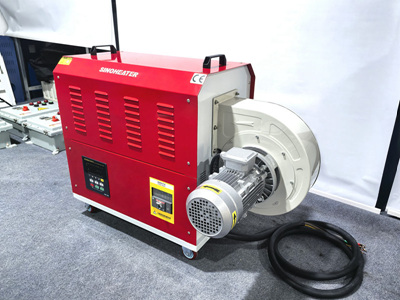Effective Heat Application Techniques for Leather Care Products Using Hot Air Guns
Understanding Leather Types and Heat Sensitivity
Full-Grain vs. Corrected-Grain Leather:
Full-grain leather retains its natural texture and oils, requiring gentler heat to avoid stripping protective layers. When applying conditioners, maintain temperatures between 35–40°C to prevent over-drying. Corrected-grain leather, with its sanded surface, tolerates slightly higher heat (40–45°C) but demands even distribution to avoid uneven absorption.
Synthetic Leather Alternatives:
Faux leather or PU-coated materials react differently to heat. Excessive temperatures (above 50°C) may cause warping or adhesive failure. Use short bursts of heat (10–15 seconds) and test on inconspicuous areas before full application.
Vintage or Antique Leather:
Aged leather often has brittle fibers. Preheat the surface to 30–35°C to soften conditioners without causing cracks. For fragile pieces, reduce airflow to minimize movement and focus heat on small sections.
Preparing the Leather Surface for Heat Application
Cleaning and Dust Removal:
Before heating, wipe the leather with a damp microfiber cloth to eliminate dirt and oils. Residue can burn under heat, creating permanent marks. For stubborn stains, use a leather-safe cleaner and allow the surface to dry completely.
Surface Pre-Conditioning:
Apply a thin layer of water-based leather hydrator to pre-soften the material. This step enhances conditioner absorption and reduces the risk of heat-induced discoloration. Let the hydrator sit for 5–10 minutes before heating.
Testing Heat Impact:
Select a hidden area (e.g., inside a jacket seam) to test heat settings. Apply conditioner, then heat the section for 10 seconds. Check for color fading, texture changes, or bubbling. Adjust temperature or duration accordingly.
Optimal Heat Application for Different Care Products
Conditioners and Creams:
When using wax-based conditioners, heat the leather to 40–45°C to melt the wax evenly. Move the hot air gun in overlapping circles, keeping the nozzle 5–8 cm from the surface. For cream-based products, reduce heat to 35–40°C to prevent excessive oil evaporation.
Waterproofing Agents:
Silicone-based waterproofers require higher temperatures (50–55°C) to activate bonding. Apply the product sparingly, then heat in 20-second intervals. Avoid overheating, which can create a sticky residue. Let the leather cool before buffing.
Dye Restoration Products:
For faded or scratched leather, use low heat (30–35°C) to blend dye patches. High temperatures may cause uneven color distribution. Apply dye with a sponge, then gently heat the area while smoothing with a cloth.
Post-Heating Treatment and Long-Term Care
Cooling and Setting:
After heating, allow the leather to cool naturally for 30–60 minutes. Avoid folding or stretching the material during this period to prevent creases. For extra durability, place a weighted board over the treated area.
Buffing and Polishing:
Once cooled, use a soft-bristled brush or cloth to buff the leather. This removes excess product and restores shine. For glossy finishes, apply a light heat (30–35°C) during buffing to enhance luster.
Storage Recommendations:
Store treated leather items away from direct sunlight and heat sources. Use breathable fabric covers to prevent dust accumulation. For long-term preservation, reapply conditioners every 6–12 months, adjusting heat settings based on seasonal humidity.
By tailoring heat application to leather types, preparing surfaces meticulously, and refining post-treatment care, users can maximize the effectiveness of leather care products while preserving material integrity.



